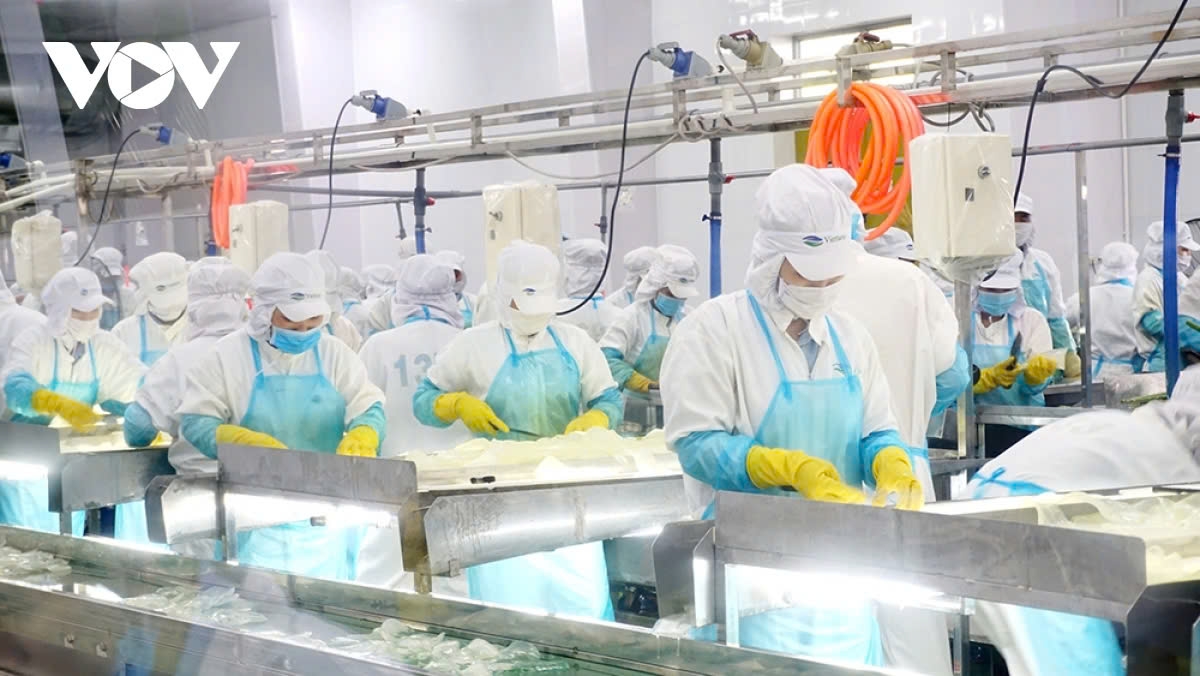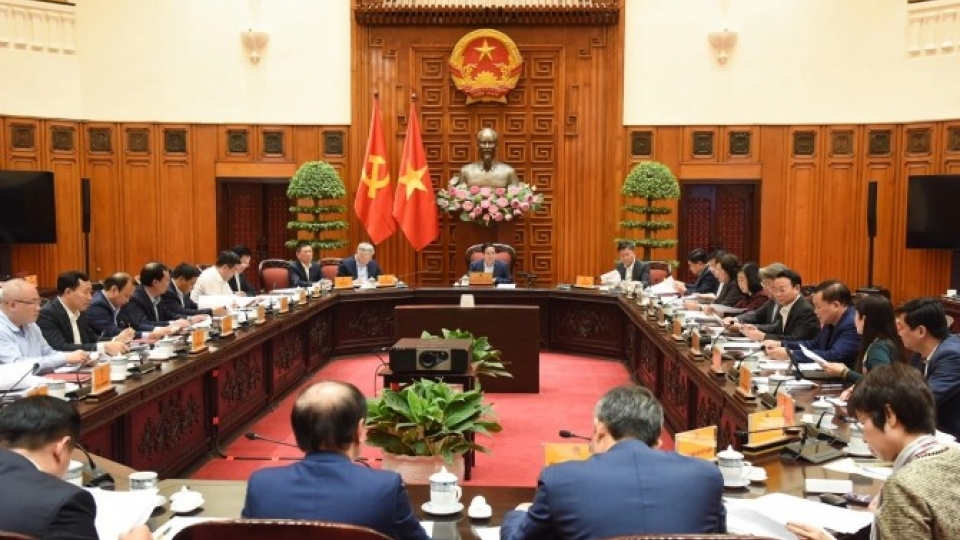Toward US tariff negotiations: What are businesses hoping for?
VOV.VN - Many of Vietnam’s export commodities, including agricultural products, enjoy advantages when entering the US market. However, the newly announced reciprocal tariff of up to 46% by the United States on Vietnamese goods affects not only industry but also agriculture.

To proactively plan production for the remaining months of 2025, exporting businesses need clarification on the tax implications for each specific product.
The Trump administration has just made the decision on the back of the imbalanced trade between the two countries. The impact of this tariff will not be uniform across all sectors, but one certainty is that the key export products will be directly and severely affected, especially textiles and footwear, which have a large share of exports to the US and rely heavily on price competitiveness.
Indeed, these are sectors with low profit margins, while material, labour, and transportation costs continue to rise. Furthermore, export sectors such as agricultural products, fruits, vegetables, and seafood are also affected by this overarching policy.
“With the reciprocal tariff of up to 46%, it is still unclear whether fruits and vegetables are included, since the export volume of this sector to the US is relatively low compared to US exports to Vietnam. However, if subject to this tax rate, the agricultural sector will face significant disadvantages,” says Nguyen Dinh Tung, chairman of the Board of Directors and CEO of Vina T&T Group.
According to the CEO, the issue should be taken into account when both sides sit on the negotiation table in the coming time.
“When the two governments enter into negotiations, we must present the fact that Vietnam has a trade deficit in fruits and vegetables with the United States. In addition, we must clarify the issue of product origin and consistently prove that this matter is not being exploited by partners outside of Vietnam to export goods to the US,” Tung further elaborates.
Meanwhile, Vu Thai Son, chairman of the Cashew Association of Binh Phuoc province and CEO and Chairman of Long Son Corporation, shares that in the over US$4 billion in cashew exports in 2024, the US was the largest market, accounting for more than US$1 billion in export value, up 31.6% compared to the same period last year.
Son admits that changing markets is clearly very difficult for cashew exports and several other sectors. The US is a premium market that, although not overly strict, is part of Vietnam’s strategy to diversify export markets, alongside China, the EU, the Middle East, South America, and Australia.
He emphasised the need to continue dialogue and suggested that Vietnam consider reducing tariffs on certain US imports as a sign of goodwill. He also proposes promoting the implementation of previously signed agreements and encouraging the signing of a new bilateral free trade agreement that meets both sides’ needs.
“In the past, they often complained that we only issued short-term visas for Americans doing business in Vietnam, which made it difficult. Now, we could consider extending visa durations to facilitate American investment in Vietnam. This is a macro-level government issue, but we must try to detail specific US items that we could reduce tariffs on,” says Son.
Hoping for negotiations, diversifying markets

Many businesses are hoping that Vietnam can negotiate and reach a mutual agreement with a reasonable tax rate in the coming days, instead of the general 46% tariff announced by President Donald Trump. Such a high tariff would not only affect Vietnam and other countries on the reciprocal tariff list but also impact American consumers, businesses, and value chains.
According to Dr. Le Dang Doanh, economist and former director of the Central Institute for Economic Management, the demand for fairness in trade is a natural trend. However, he is concerned that the high US tariff could lead to foreign direct investment (FDI) enterprises leaving Vietnam, affecting the goal of 8% economic growth in 2025.
He proposes expanding exports to new markets like the Middle East, Africa, and South America to reduce dependence on the US and mitigate the impact of high tariffs. He also recommends adjusting production and export processes to prove that Vietnamese products are unrelated to China in order to negotiate tariff reductions with the US.
To address the negative effects on labour employment, he suggests increasing domestic consumption and exploring other export markets. He urges businesses to prepare contingency plans for the worst-case scenario.
“Vietnam can press ahead with negotiations, but it is clear that persuading the US to adjust tariffs is very difficult. Therefore, we must expand and seek out new markets while continuing persistent negotiations with the US to find a suitable solution,” he says
Dr. Do Thien ANh Tuan from Fulbright School of Public Policy and Management points out, given current challenges, maintaining dialogue, showing goodwill, and seeking mutual understanding are key to resolving trade disputes between Vietnam and the US.
An immediate solution, he suggests, is to support businesses in reducing production costs, and to this end, the government should lower logistics and administrative costs, helping businesses save money and improve competitiveness.
In addition, businesses should be encouraged to shift to sustainable development models. The government should support financial aid for technological upgrades and establish criteria for evaluating technology, prioritizing US technology imports at 0% tariff rates. Finally, the economy should be restructured, and the domestic consumption structure reconsidered.
“The government should support businesses by providing capital, credit, and incentives to help them upgrade machinery and technology. Importing US equipment is a strategic solution to gradually reduce the trade deficit with the US. I believe this is a feasible short-term solution. As for closing the trade gap that the US complains about, this is not a problem and we should try to solve quickly, because addressing it would take more time than the four-year term of a Trump administration.”
Vietnam is among the top three bilateral trade partners of the US, with a trade surplus of up to US$100 billion. This is a significant gap that is difficult to narrow in the short term. Most businesses believe that switching markets cannot be done immediately. The key issue is that the US side needs Vietnam to come to the negotiation table.





